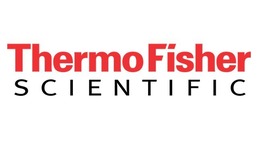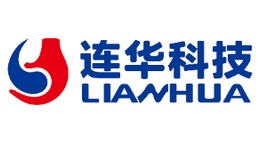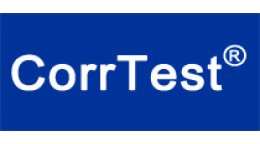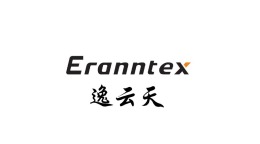方案详情文
智能文字提取功能测试中
Inorganic Chemistryincludiny bioinoryanic chemistrySubscriber access provided by NANJING UNIV lnorganic Chemistryincludiny bioinoryanic chemistrySubscriber access provided by NANJING UNIV Article Alteration of Molecular Conformations, Coordination Modes, andArchitectures for a Novel 3,8-Diimidazol-1,10-phenanthrolineCompound in the Construction of Cadmium(II) and Zinc(II) HomochiralCoordination Polymers Involving an Auxiliary Chiral Camphorate Ligand Li Wang, Wei You, Wei Huang, Cheng Wang, and Xiao-Zeng You Inorg. Chem.,2009,48(10),4295-4305·DOI: 10.1021/ic802445q·Publication Date (Web): 07 April 2009 Downloaded from http://pubs.acs.org on May 11, 2009 More About This Article Additional resources and features associated with this article are available within the HTML version: Supporting Information Access to high resolution figures Links to articles and content related to this article Copyright permission to reproduce figures and/or text from this article Alteration of Molecular Conformations, Coordination Modes, andArchitectures for a Novel 3,8-Diimidazol-1,10-phenanthroline Compoundin the Construction of Cadmium(Il) and Zinc(II) Homochiral CoordinationPolymers Involving an Auxiliary Chiral Camphorate Ligand Li Wang, Wei You, Wei Huang,*Cheng Wang, and Xiao-Zeng You State Key Laboratory of Coordination Chemistry, Nanjing National Laboratory of Microstructures,School of Chemistry and Chemical Engineering, Nanjing University, Nanjing 210093, P. R. China Received December 25, 2008 A novel 3,8-diimidazol-1,10-phen (phen = phenanthroline) compound has been prepared from the carbon-nitrogenbond cross-coupling reaction. X-ray structural studies for this compound and its dihydrate reveal they have differentmolecular conformations (L in 1 and L·2H20 in 2). Two cadmium(Il) and one zinc(ll) complexes of 3,8-diimidazol-1,10-phen, formulated as [Cdz(D-cam)2(La)2]·(H20)6 (3), [Cd2(D-cam)2(La)(H20)] (4), and [Zn2(D-cam)2(Lb)2]·(H20)5(5), have been obtained involving an auxiliary chiral ligand p-cam (a dianion of D-camphoric acid) where the 3,8-diimidazol-1,10-phen ligand shows different molecular conformations, coordination modes, and architectures.Furthermore, D-cam and 3,8-diimidazol-1,10-phen ligands exhibit different bridging fashions to construct a homochiral2D coordination polymer 3 and two homochiral 3D coordination polymers 4 and 5. Density function theorycomputational studies on comparing the different molecular conformations of the 3,8-diimidazol-1,10-phen ligandas well as spectral, nonlinear optical, and thermal properties for related compounds before and after the metal-ioncomplexation have also been carried out. Introduction Recently, the research interest on coordination polymersand porous metal-organic frameworks is rapidly increasingbecause of their aesthetic architectures and fascinatingpotential applications on gas adsorption, ion exchange,catalysis, photoluminescence, electric conductivity, and soon.Preparation of these coordination polymers is alwaysbased on many factors, especially the metal ions and ( * To o whom c orrespondence should be addressed. E-mail: whuang @nju.edu.cn. ) ( (1) (a) Kitagawa, S. ; Uemura, K. Chem. Soc. Rev. 2005, 3 4,1 0 9. (b) K esanli, B.; L in , W. Coord. Chem. R eu. 2 003, 246,305.(c) R a o,C. N . R .; Natarajan, S.; Vaidhyanathan, R. A ngew. C h em., Int. Ed. 2004, 43, 1 466. (d) Pan, L.; Olson,D. H.; Ciemnolonski, L. R.; Heddy, R.; Li, J. Angew. Chem., Int. Ed. 2006, 45, 616. ) ( (2) (a) Batten, S . R.; Robson , R. Ang e w. Chem., Int . Ed. 1998,37, 1460.(b) Kitagawa, S.; Kitaura, R.; Noro, S. I. Angew. Chem., Int. Ed. 2004,43, 2334. (c) Robin, A. Y.; Fromm, K.M. Coord. Chem. Rev. 2006, 250, 2 127. (d) D a lgarno, S. J.; T h allapally, P . K . ; B a rbour, L. J. ; Atwood, J. L. Chem. Soc. Rev. 2007, 36,236. ) ( (3) (a) Yaghi, O . M.; O'Keeffe, M.; Ockwig, N. W .; C hae, H . K .; E ddaoudi, M .; Kim, J. N ature (London) 2003, 423, 705. (b) Janiak,C. Dalton Trans. 2003,2781.(c) Eddaoudi, M.; Mol e r, D. B.; Li, H.;Chen, B .; Reineke, T. M.;O’Keeffe, M.; Yaghi, O. M. Acc. C h em. Res. 2001, 34, 319. ) ( 10.1021/ic802445q CCC: $ 40.75 C2009 American C h emical S o ciety Published on Web 04/07/2009 ) counterions with different charge, size, and geometricalrequirements for coordination as well as the number ofcoordination sites of organic building blocks. Metal com-plexes of 1,10-phen and its derivatives often show attractivechemical and physical properties in the area of coordinationchemistry, material chemistry, analytical chemistry, metal-loenzymes, probes of nucleic acids, and redox processesbecause of their strong chelating abilities and good s-con-jugated character of ligands.To date, many metal complexes ( (4) ( a) Férey, G .; M ellot-Draznieks, C.; Serre, C.; Millange, F. ; Dutour, J .; Surble, S.; Margiolaki, I. Science 2005, 309,2040. (b) Zhao, X.;Xiao, B.; F letcher, A. J . ; Thomas, K . M.; Bradshaw, D. ; Ro s seinsky, M. J. Science 2 004, 3 06,1 0 12.(c ) Hagrman, P. J.; Ha g rman, D.; Zubieta, J . Angew. C h e m., I n t. E d. 1 999, 3 8, 2 639. ) ( (5) (a) Halder, G. J.;Kepert, C. J.;Moubaraki, B.; Murray, K. S.; Cashion, J .D. Science 2002, 298,1 7 62. ( b ) Evans, O. R.; Ngo, H. L.; L in, W. J. Am. C hem. S o c. 2 0 01, 123, 10 3 95. (c ) Fang, Q. R. ; Zh u , G. S.;Xue,M . ; Sun,J. Y. ; Tian, G.; W u , G. ; Qiu, S. L . D alton Trans. 2004,2202. (d) Fang, Q . R .; Zhu, G . S .; Xue, M .; S un, J. Y.; Wei, Y .; Qiu,S. L.; Xu, R. R. Angew. C hem., Int. E d. 2005, 4 4, 3 845. ) ( (6) ( (a) S chilt, A. Applications o f 1,10-Phenanthroline a n d Related C ompounds; Pergamon: Lo n don, 1969. (b) Tomasik, P. ; R a tajewicz, Z . Pyridine Metal Complexes; J ohn Wiley & Sons: N ew York, 1985. ( c) Sammes, P. G.; Yahioglu, G. Chem. Soc. R e v. 1 9 94, 23, 327. (d) Chelucci,G.; Thummel, R. P. Chem. Rev. 2002, 102, 3129. ) bearing substituent 1,10-phen ligands have been preparedand characterized.7-12 However, there are only severalstructural investigations on 33,83 substiittuutteedd 1,10-phencompounds. 3-15 In our previous work, 3,8-bis(4-mercaptophenyl)-1,10-phen,3,8-bis(3',4'-dibutyl-5"-mercapto-2,2':5',2"-terthiophen-5-yl)-1,10-phen and their respective Ru(Il) complexes were preparedand used to combine with active gold nanoparticles on 1 umgap gold electrodes in order to prepare photoresponsive self-assembled nanocomposite thin films.14,15 Both of the above-mentioned 3,8-thiophene- and 3,8-phenyl-substituted 1,10-phensemiconductor compounds were prepared by the carbon-carbonbond cross-coupling reaction. As for the carbon-nitrogen bondcross-coupling reaction of 3,8-dibromo-1,10-phen, only oneexample ofpalladium(II)-catalyzed diarylamino-1,10-phen de-rivatives was reported.6 In this work, we focus on synthesizinga new multidentate ligand 3,8-diimidazol-1,10-phen via thecarbon-nitrogen bond cross-coupling reaction between 3,8-dibromo-1,10-phenanthroline and imidazole using Ullmann ( ( 7) ( a) Zong, R. F; Thummel, R. P. J. Am. Chem. Soc. 2 004, 126, 1 0800. (b) Muniz,K.; N ieger, M. Angew. Chem., I nt. Ed. 2006, 4 5, 2 305. (c)Stahl, S. S. ; Thorman, J. L. ; Nelson, R. C. ; Kozee, M. A. J . Am. Chem. Soc.2001,12 3 ,718 8 .(d) H itchcock, P. B . ; Hulkes, A. G.; Lap p ert, M. F .; Li, Z. N. Dalton Trans. 2004, 129. ) ( (8) ( (a) D har, S .; Senapati, D .; D as, P. K . ; C h attopadhyay, P.; Ne t haji, M .; C hakravarty, A. R. J. Am. C hem. S oc. 2 003, 1 25,1 2 118. ( b ) Seebacher, J .; Ji, M.; Vahrenkamp, H. E u r. J . I n org. Chem. 20 0 4,409. ( c) F anizzi, F . P .; Margiotta, N .; L anfranchi, M.; T i ripicchio,Mascaros,J. R.; Gudel, H. U.; A chim, C.;Dunbar, K. R. J. Am. Chem.Soc.2004,126,6222. (e) Berlinguette, C. P.; Dragulescu-Andrasi, A;Sieber, A.; Gudel, H . U; Achim, C.; D u nbar, K. R. J. Am. Ch e m. Soc . 2005, 127,6766. ) ( (9)((a) Miller, M. T. ; Gantzel, P. K.; Karpishin, T. B. J. Am. Chem. Soc. 1 999, 1 21, 4 292. (b) H offmann, S . K . ; Corvan, P. J. ; S i ngh, P . ; S ethulekshmi, C. N.; Metzger, R . M . ; H a tfield, W. E . J . A m. C h em. Soc. 1 983,1 0 5,46 0 8.(c) Hut i n, M.;Scha l ley, C. A.; Bern a rdinelli, G.; Nitschke, J. R. Chem.-Eur. J . 2006, 1 2,4069. (d) Wall, M.; L inkletter, B.; Williams, D. M .; Lebuis, A . ; H y nes, R. C. ; Ch i n, J.J. A m. Chem. Soc. 1999, 121,4710. ) ( (10) ( a) Melton, D . L.; V anDerveer, D. G.; Hancock, R. D. Inorg. Chem. 2006,45,9306. (b) Cuevas, A.; Kremer, C.; Hummert, M.; Schumann, H .;Lloret, F .; Julve, M.; F aus, J . Dalton T rans. 2007, 3 4 2. (c) B u sby, M .; Gabrielsson, A .; Matousek, P.; Towrie,M.; D i B i lio, A . J .; Gray, H. B .; Vlek, A., Jr. Inorg . Chem. 2004,43,4 9 94. ) ( (11) (a) Mellace, M. G.; Fagalde, F.;Katz, N. E.; C r ivelli, I. G.; Delg a dillo, A .; Leiva, A. M.; Loeb, B.; Garland, M. T.; Baggio, R. Inorg. Chem.2004,43,1100.(b) Harrop, T . C.; Olmstead, M. M.; Mascharak,P. K. , J. Am. Chem. S oc.2 0 04,12 6 ,147 1 4. (c) Harrop, T. C.; Olmstead, M . M.; Mascharak, P . K . I n org. Chem. 2 0 06, 45,3424. ) ( (12) ( ( a) Lanznaster, M .; H eeg, M . J.; Yee, G. T.; McGarvey, B. R.; Ve r ani,C. N. Inorg. Chem.2007, 46, 7 2.(b) A rmentano, D . ; Munno, G. D.; Guerra, F.; Julve, M.; Lloret , F . Inorg. Chem2006,45,4626. r8. (c)Yam, W. W . V.; K o , C. C.;Zhu, N. Y. J. Am. Chem. Soc.2004, 126,12734. ) ( ( 13) ( a) Y uan, Y . F . ; Cardinaels, T .; L unstroot, K .; V a n Hecke, K. ; Meervelt, Van,L.;Gorller-Walrand, C.; Binnemans, K.; Nockemann,i30 P. I norg. Chem. 2007, 4 6 , 5 3 02. (b ) Zeng, X. S.; Tav a sli, M. ; P erepichka, . F.; Batsanov, A. S . ; Bryce, M. R.; Chiang, C. J . ; Rothe, C .; Monkman, A. P. Ch e m.-Eur. J. 200 8 , 14, 933. (c) Chen, X. Y.; Yang, X . P.; Holliday,B. J. J. Am. Chem. Soc. 2 008, 1 30, 1 546.( d ) S hiotsuka, M . ; I n ui, Y . ; I t o, M .; Onaka, S. ; Ozeki, T. ; Ch i ba, H. Ac ta Crystallogr. 2006, E62, m980. (e) Shiotsuka, M.;Ogasawara, H.; Ito, M .; O naka, S . A c ta Crystallogr., S e ct. E 2006, 6 2 , m1410. ) ( ( 14) H uang, W.; Masuda, G . ; Maeda, S . ; T anaka, H .; Hino, T. ; Ogawa, T. I norg. Chem. 2008,47, 4 68. ) ( (15) H uang, W.; Tanaka, H.; Ogawa, T . J . Phys. Chem. C 2008,112,11513. ) ( (16) S uzuki, H.; K anbara, T.; Y amamoto, T. Inorg. Chim. Ac t a 2004, 357, 4335. ) Scheme 1. Schematic Illustration of Isomers of 3,8-Diimidazol-1,10-phen Ligand in Different Conformations N N= L(cis/cis) condensation methodsbecause this ligand has the followingstructural characters: (i) It has a more delocalized z-system than1,10-phen, which will facilitate the transportation of electronwithin the molecule. (ii) The stereochemistry and conformationof this ligand (trans/trans, trans/cis, and cis/cis) are interestingin the formation hydrogen contacts and coordinative bondsbecause of the free rotation of the C-N single bonds betweenthe two side imidazole rings and the central phen ring (Scheme1). (iii) The number of the possible coordination sites is variableand diverse coordination modes, architectures, and topologies,such as helical and zigzag structures in this work, can beexpected under different experimental conditions by using thisimidazole-terminated phen bridging ligand. In view of the aforementioned structural characters of 3,8-diimidazol-1,10-phen, it is possible for us to construct certainchiral coordination polymers by inducing some chiralsources, which may have potential applications in the areaof asymmetric catalysis, enantioselective separation, ionexchange, proton conductivity, intercalation chemistry, pho-tochemistry and material chemistry. In this paper, we usean extensively studied D-camphoric acid (D-H2cam) as anauxiliary lliiggaannd19,20and report one 2D[Cd(D-cam)2(La)2]·(H2O)6 (3) and two 3D homochiral coordinationpolymers [Cd2(D-cam)2(La)(H2O)] (4) and [Zn2(D-cam)2(Lb)2]·(H2O)5 (5) (Scheme 2), together with 3,8- ( (17)(a) Goodbrand, H. B.; H u, N. X. J. Or 2 g 1 . Chem. 1999, 64, 6 70. (b) L indley, J . Tetrahedron 1 980, 40, 1433.(c) F a nta, P . E . S y nthesis.1974, 1 . (d) Hartwig, J . F. Angew. Chem., Int . Ed . 1998 , 37 , 2046. ) ( (18) ( ( a) L i, J. R.; T ao, Y.; Yu, Q.; Bu, X. H.; Sakamoto, H .; Kitagawa, S.Chem.-Eur. J. 2008,14,27 7 1. ( b )Du, M.; Bu, X. H.; Guo, Y. M.; R ibas,J. ; Diaz, C. Chem. Commun. 2002,2550. (c) Bu, X. H.; Chen,W.; D u, M.; Biradha, K.; Wang, W. Z. ; Zhang, R. H. Inorg. Ch e m.2002,4 1 ,43 7 .(d) Naumov, I. I.; Fu, H. Phy s . Rev . Let t . 2005, 95, 247602.(e) Naumov, I . I.; B e llaiche, L.; Fu, H. Nature (London) 2004,432, 7 37. ( f) Gu, Z. G.; Zhou, X. H. ; Ji n , Y. B. ; Zuo, J. L. ; Yo u , X . Z . Inorg. C hem. 2007, 46,5 4 62.(g ) Wang, L.; You, W. ; Hu a ng,W. J. Mol. S truct. 2009, 920,270. ) (19)((a) Zhang, J.; Bu, X. H. Angew. Chem., Int. Ed. 2007,46,6115. (b)Chen, S. M.; Zhang, J.; Bu, X. H. Inorg. Chem. 2008, 47,5567.(c)Zhang, J.; Yao, Y. G.; Bu, X. H. Chem. Mater. 2007, 19, 5083.(d)Zhang, J.; Chew, E.; Chen, S. M.; Pham, J. T. H.; Bu, X. H. Inorg.Chem. 2008, 47,3495.(e) Zhang, J.; Liu, R.; Feng, P. Y.; Bu, X. H.Angew. Chem., Int. Ed. 2007, 46,8388.(f) Zhang,J.; Bu, X. H. Chem.Commun. 2008, 444. (g) Zhang, J; Chen, S. M.; Valle, H.; Wong,M.; Austria, C.; Cruz,M.; Bu, X. H. J. Am. Chem. Soc. 2007, 129,14168. ( (20) ( a) Dybtsev, D. N.; Yutkin, M. P.; Pe r esypkina,E. V.; V iro v ets, A. V.; Serre, C.; Ferey, G .; Fedin, V. P . Inorg. Chem. 2 007, 46, 6843.(b) Rood, J. A.; Boggess, W. C .; Noll, B. C.; Henderson, K. W. J. Am.Chem. S oc.2007, 129, 1 3675. (c) Zeng, M. H.; Wang, B.; Wang, X. Y .; Zhang, W. X.; C hen, X. M.; Gao, S. I norg. Chem. 2 006, 45,7069. ( d) Thuéry, P . E ur. J . Inorg. Chem. 2 006, 3646.(e ) Kasuga, N . C.; S ugie, A .; N omiya, K. Da l ton Trans. 2007, 373 2 . (f) Zhang, J.; Wu, T.; Feng, P. Y.; Bu, X. H. C hem. Mater. 2008, 20, 5457. (g)Zhang, J.; Chen, S. M.; Bu, X. H. Angew. Chem., I n t. E d. 2 008, 47 ,5434. ) Scheme 2. Schematic Illustration of Different Conformations of 3,8-Diimidazol-1,10-phen Ligand in Different Coordination Modes with Cd(II) andZn(II) Metal Ions diimidazol-1,10-phen ligand (Lb)(1) and its dihydrate(Lc·2H2O)(2). Furthermore, density functional theory (DFT)computations on comparing the different molecular confor-mations of this ligand and spectral, nonlinear optical, andthermal properties of related complexes are included. Experimental Section Materials and Measurements.All reagents were of analyticalgrade from commercial sources and were used without anyfurther purification. Elemental analyses were measured with aPerkin-Elmer 1400C analyzer. Infrared spectra (FT-IR, 4000-400cm-) were collected on a Nicolet FT-IR 170X spectrophotom-eter at 25C using KBr plates.H NMR spectra were obtainedin a Bruker 500 MHz NMR spectrometer. Electrospray ionizationmass spectra (ESI-MS) were recorded on a Finnigan MAT SSQ710 mass spectrometer in a scan range 100-1200amu.Ultraviolet-visible(UV-vis) spectra were recorded on aShimadzu UV-3100 double-beam spectrophotometer using aPyrex cell with a path length of 10 mm at room temperature.Luminescence spectra were recorded on a Hitachi 850 fluorescentspectrophotometer at room temperature (25C). A pulsedQswitched Nd:YAG laser with a wavelength of 1064 nm wasused to generate the SHG signal. The backward-scattered SHGlight was collected using a spherical concave mirror and passedthrough a filter that transmits only 532 nm radiation. PowderX-ray diffraction (XRD) measurements were performed on aPhilips X'pert MPD Pro X-ray diffractometer using Cu Karadiation (a=0.15418 nm), in which the X-ray tube wasoperated at 40 kV and 40 mA at room temperature. Thermo-gravimetric analysisInstruments DTA-TGA 2960 type simultaneous analyzer heatingfrom 20 °C to 800 °C at 10°C/min.The autoclave equippedwith a 25 mL Teflon cup used. for 1preparing complexxvwasproduced by Binghai Xian Zhenghong Plastic Factory in Jiangsuprovince. Ligand Synthesis. 3,8-Diimidazol-1,10-phen. 3,8-Dibromo-1,10-phen²(1.014 g, 3.0 mmol), imidazole (0.681 g, 10.0 mmol),K2CO; (0.691 g, 5.0 mmol), and anhydrous CuSO4 (0.012 g, 0.075mmol) were mixed and heated at 180℃ under N2 for 4 h. Afterbeing cooled to room temperature, the resultant mixture was washedwith water and the residue was extracted with CHCl (5×30 mL).The organic layer was separated, dried over anhydrous sodiumsulfate, evaporated to dryness, and recrystallized from water andethanol. Yield: 70%. Mp >220C. Elemental anal. Calcd forC18H12N6: C, 69.22; H, 3.87; N, 26.91. Found: C, 69.18; H, 3.98;N, 26.88%. Main FT-IR absorptions (KBr pellets, v, cm-): 3116(m), 1615 (m), 1497 (s), 1439 (m), 1406 (w), 1373 (w), 1321(m),1298 (s),1259 (m), 1105 (m), 1067 (m),1032(w), 1004 (m), 903(m), 883(m), 799 (w), 726 (m), and 652 (m). HNMR (500 MHz,CD;OD, 298K,TMS, ppm): 9.1 (2H, phen), 8.76 (2H, phen),8.52(2H, phen), 8.15 (2H, imidazole), 7.93 (2H, imidazole), and7.32 (2H, imidazole). ESI-MS,m/z (%): 313(100), [HL]*; 335(50), [NaL]+.UV-vis (CHOH) Amax =317 and 262 nm. The lightyellow needlelike single crystals of L (1) suitable for X-raydiffraction determination were grown from a solution of methanolby slow evaporation in air at room temperature, while the colorlessneedle-like single crystals of L·2H2O (2) suitable for X-raydiffraction determination were grown from a mixed solution ofmethanol and water (2:1) by slow evaporation in air at roomtemperature. Main FT-IR absorptions (KBr pellets, v,cm) for 2:3441 (b), 3153 (m), 3117 (m), 3057(m), 2999 (w), 1614 (s),1505(s), 1483 (m), 1443 (m),1407 (w), 1372 (w), 1322 (s), 1302(s),1246 (s), 1108(m), 1069 (m), 1034 (m), 1007 (m), 916 (m), 820(m), 791 (m), 741 (m), and 729 (m). Preparation of the Complexes. [Cdz(D-cam)2La2]·(H2O)6(3). A mixture of D-H2cam (0.010 g, 0.05 mmol), NazCO3 (0.005g, 0.05 mmol), 3,8-diimidazol-1,10-phen (0.016 g, 0.05 mmol), andCd(NO3)2·6H2O (0.035 g, 0.10 mmol) in a molar ratio of 1:1:1:2and HO (8mL)was sealed in a 25 mL Teflon cup, heated at 140then cooled to room temperature ( (21) S aitoh, Y.; Koizumi, T.; Osakada, K.; Yamamoto, T. C a n. J. Chem. 1997, 75,1337. ) yellow microcrystals. Yield: 0.052 g (76%) based on metal. Anal.Calcd for C56H64Cd2N12O14: C, 69.22; H, 12.10; N, 26.91%. Found:C, 69.32; H, 12.04; N, 26.80%. Main FT-IR absorptions (KBrpellets, v, cm-l): 3441 (w), 3096 (w), 2965 (w), 1613 (m), 1551(s), 1502 (S), 1480 (w), 1441 (m), 1393 (m), 1307 (m), 1256 (w),1107 (w), 1072 (m), 1034 (w), 1005 (m), 932 (w), 886 (w), 786(w), 727 (m), and 654 (m).ESI-MS, m/z (%): 697(100), [CdL (D-Hcam)(CH;CN)(CH;OH)]*; 954 (20), [CdLa2(D-Hcam)(H2O)]+.UV-vis (DMF) Amax =321 and 275 nm. [Cd2(D-cam)2(La)(H20)] (4). A mixture of D-H2cam (0.010 g,0.05 mmol), NazCO3 (0.005 g, 0.05 mmol), 3,8-diimidazol-1,10-phen (0.016 g, 0.05 mmol), and Cd(NO3)2*6H,O (0.052 g, 0.15mmol) in a molar ratio of 1:1:1:3 and HO (10 mL) was sealed ina 25 mL Teflon cup, heated at 140 ℃ for 3 days,;. then cooled toroom temperature, giving light yellow microcrystals. Yield: 0.050g (70%) based on metal. Anal. Calcd for C38H42Cd2N60g: C, 47.96;H, 4.45; N, 8.83%. Found: C, 48.05; H, 4.40; N, 8.72%. Main FT-IR absorptions (KBr pellets,v, cm-): 3379 (w), 3114 (w), 3066(w), 2963 (m),1616 (m), 1544 (s), 1513 (s),1451(w), 1403 (m),1366 (w), 1299 (w), 1272(w), 1176 (w), 1122 (m),1070 (m), 1003(w), 920 (m), 811 (m), 751 (w), 720 (w), and 641 (m). ESI-MS,m/z(%):570(100),[CdLa2(D-Hcam)2(CH,OH)]2-/2; 273 (69),[Cd(D-cam)2(H2O)2]2-/2.UV-vis (DMF) Amax = 323 and 277 nm.[Zn2(D-cam)2(Lb)2]·(H20)s (5). A mixture of D-H2cam (0.010g, 0.05 mmol),NazCO3(0.005 g, 0.05 mmol), 3,8-diimidazol-1,10-phen (0.016 g, 0.05 mmol), and Zn(NO3)2*6H2O (0.030 g, 0.10mmol) in a molar ratio of 1:1:1:2 and H2O (10 mL) was sealed ina 25 mL Teflon cup, heated at 140 ℃ for 3 days, and then cooledto room temperature,, giving light yellow microcrystals. Yield: 0.047g (75%) based on metal. Anal. Calcd for C56H62Zn2N12O13: C,54.16;H, 5.03; N, 13.53%. Found: C, 54.23; H, 4.99; N, 13.58%. MainFT-IR absorptions (KBr pellets, v,cm): 3413 (s), 3142 (m), 2966(m), 1588 (s), 1511 (s),1447 (m), 1366 (s), 1314 (w), 1254 (w),1125 (m), 1072 (m), 1036 (w), 1003 (w), 942 (w), 906 (w), 797(w), 729 (m), and 650 (m). ESI-MS, m/z (%):414 (100), [ZnL,(D-H2cam)(CHOH)(H2O)]2+/2; 673 (50), [ZnLb(D-Hcam)(CH;OH)(C2H5OH)(H2O)]+.UV-vis (DMF) Amax =321 and277 nm. Crystallography. All single-crystal samples were covered withglue and mounted on glass fibers for data collection with Mo Ka 81 1 2 3 4 5 empirical formula C18H12N6 C18H16N602 C56H64Cd2N12O14 C38H42Cd2N6O, C56H62Zn2N12O13 fw 312.34 348.37 1354.02 951.58 1241.92 cryst syst monoclinic triclinic orthorhombic monoclinic monoclinic space group P2/c P1 P222 P2 P2 a (A) 11.107(1) 7.194(1) 16.902(3) 6.4751(8) 10.592(4) b(A) 9.464(1) 8.428(1) 18.351(2) 23.110(3) 22.306(8) c(A) 13.306(1) 14.081(2) 18.787(3) 12.560(2) 13.120(5) a (deg) 90 87.277(2) 90 90 B (deg) 91.210(3) 81.357(1) 100.715(2) 100.813(4) y (deg) 90 73.104(2) 90 90 v(A3) 1398.4(3) 807.53(19) 5827.1(17) 1846.6(4) 3045(2) Z, Dcalcd (Mg/m') 4,1.484 2,1.433 4, 1.543 2,1.711 2,1.355 F(000) 648 364 2768 960 1292 u(mm-) 0.095 0.099 0.805 1.217 0.858 hmin/hmax -10/13 -8/8 -19/20 -7/7 -12/12 kmin/kmax -11/11 -10/9 -21/21 -27/26 -11/26 lmin/lmax -15/15 -13/16 -22/12 -14/14 -15/15 params 217 235 763 483 727 final R indices Ri=0.0696, Ri=0.0451, Ri=0.0489, R:=0.0558, R1=0.0715, [I>20(D] wRz=0.1434 wR2 = 0.0898 wR,=0.0721 wR2=0.1393 wR2=0.1630 R indices (all data) Ri=0.0749, Ri=0.1047, Ri=0.0611, R: =0.0679, Ri=0.1330, wR2 = 0.1463 wR2=0.1067 wR2 = 0.0751 wR2=0.1474 wR2= 0.1808 GOF on F2 1.06 0.78 1.07 1.08 0.98 A (e A-3)(max, min) 0.27/-0.23 0.19/-0.23 0.67/-0.46 1.21/-1.25 0.48/-0.36 flack parameter radiation (a=0.71073 A) on a Bruker SMART 1000 diffractometerequipped with a CCD camera. Data collection was performed byusing SMART program and cell refinement and data reduction weremade with the SAINT program.All the structures were solvedby directed method and refined on Fby using full-matrix least-squares methods with SHELXTL version 6.10.23 All non-H atomswere anisotropically refined. All hydrogen atoms were inserted inthe calculated positions, assigned fixed isotropic thermal parametersat 1.2 times the equivalent isotropic U of the atoms to which theyare attached (1.5 times for the methyl groups and oxygen atoms),and allowed to ride on their respective parent atoms. All calculationswere carried out on a PC computer with the SHELXTL PC programpackage and molecular graphics were drawn by using XSHELLand DIAMOND softwares. The Ue parameters of some camphorateunits in complexes 3-5 are relatively large, mainly because of thelow quality of the single-crystal samples; however, their structuralmodels are believed to be reliable from the viewpoint of chemistry.Details of the data collection and refinement for 1-5 are given inTable 1, whereas the selective bond lengths and angles of thesecomplexes are listed in Table 2. Results and Discussion Synthesis and Electronic Spectral Characterizations.3,8-Diimidazol-1,10-phen was synthesizedby thecarbon-nitrogenbond cross-coupling reaction between 3,8-dibromo-1,10-phenand imidazole in a high yield using Ullmann condensationmethods.Single-crystal samples of 1 and 2 with or withoutlattice water molecules were grown from different solvents.It is found that metal complexes 3, 4, and 5 can be yieldedby using different molar ratios of four starting materials inthe process of metal-ion complexation (Scheme 2) and theexperimental results are easy to be reproduced. In addition,it is suggested that the difference in the radii of Cd(II) andZn(II) ions contributes to forming different networks of 3-5 ( ( 22) S MART and SA I NT, Ar e a Detector Co n trol and Integration Software; Siemens A n alytical X -ray Systems I n c.: Madison, W I, 2000. ) ( (23) Sheldrick, G. M. SHELXTL, v e rsion 6.10, Siemens Industrial Automa-tion: Madison, WI, 2 000. ) Table 2. Selected Bond Distances(A) and Bond angles (deg) in 1-5" +x,-0.5-y, 1-z. D: -2+x,y, -1 +z. E: 1-x,0.5+y,2 - z. F:2-x,0.5+y,1-z. G: 2-x,0.5 +y,-z. H: x,-1+y,-1 + z. I: 11-x,-0.5+y, 1 - z. where 3,8-diimidazol-1,10-phen ligand shows different mo-lecular conformations, coordination numbers, and architectures. The UV-vis spectrum of free 3,8-diimidazol-1,10-phenmolecule in methanol exhibits two absorption bands at 262and 317 nm, respectively. The first one is assigned to anintraring j-n* transition in 3,8-diimidazol-1,10-phen, andthe second to an inter-ring s-n* transition within theconjugated j system. Because of the low solubility ofcomplexes 3-5 in methanol, DMF was used as the solvent to record the UV-vis spectra. The absorption peaks at high-energy band (275 and 321 nm in 3, 277 and 323 nm in 4,277 and 321 nm in 5) have been red-shifted to a differentextent compared with the free ligand, indicative of theinfluence of metal-ion complexation. Three complexes haveno absorption in the low-energy band because of the samedl0 electronic configuration of Zn(II) and Cd(II) ions.24 DFT Computational Studies for Different Isomers of3,8-Diimidazol-1,10-phen in the trans/trans, cis/cis, andtrans/cis Conformations. All the DFT calculations werecarried out with the Gaussian 03, revision C.02, programsusing the MPW1PW91 method and the LanL2DZ basis set.The fixed atom coordinates of 1 and 2, originating from thestructural parameters determined by the X-ray diffractionmethod, were used as the input file for the total energycalculation. DFT calculations have been carried out to compare theenergy differences between the single-crystal and the energy-minimized structures for 3,8-diimidazol-1,10-phen with theimidazol rings in the trans/trans, trans/cis, and cis/cisconformations relative to the central phen plane (Scheme1). The total energy for the single-crystal structure of 1,where the two nitrogen atoms of imidazol rings are in thecis/trans conformation relative to the two nitrogen atoms ofphen unit, is -2677497.61 KJ/mol, whereas the energy-minimized structure has the total energy of -2678608.40KJ/mol. In contrast, the total energy for the single-crystalstructure of 2 in the cis/cis conformation is -2677917.10KJ/mol and that for the energy-minimized structure is-2678607.56 KJ/mol. The total energy for the energy-minimized structure of trans/trans isomer is-2678608.64KJ/mol. Large energy gaps between the single-crystalstructure and the energy-minimized structure for 1 (1110.79KJ/mol) and 2 (690.46 KJ/mol) reflects the contribution ofsupramolecular interactions between molecules in the solidstate such as hydrogen bonding and j-j stacking. The sequence for the thermal stability of energy-minimizedstructures of 3,8-diimidazol-1,10-phen in these configurationsis trans/trans > trans/cis > cis/cis isomers. However, theenergy gaps of three isomers (0.84 KJ/mol between the cis/cis and trans/cis isomers and 0.20 KJ/mol between the trans/cis and trans/trans isomers) are not so large, which meansthat all of them are accessible isomers and they are ( (24) L ever, A. B. P. I norganic E lectronic Spect r oscopy, 2 n d ed.;Elsevier: Amsterdam, 1 984. ) ( (25) F risch, M. J . ; T rucks, G. W.; Schlegel, H. B. ; Scuseria, G. E. ; Ro b b, M . A.; Cheeseman, J. R . ; Montgomery, J. A.; Vreven, Jr T.; K u din, K . N.; B urant, J. C .; M illam, J . M.; Iyengar, S. S.; Tomasi,J.; Ba r one,V.;Mennucci, B.; Cossi, M.; Scalmani, G.; Rega, N.; Petersson, G. A.;Nakatsuji,H.; Hada, M.; Ehara, M.; Toyota, K.; Fukuda, R.; Hasegawa,J.; Ishida, M.; Nakajima, T .; Honda, Y .; K itao, O.; Nakai, H .; Klene, M .; L i, X .; K nox, J. E . ; H r atchian, H. P. ; Cross, J. B.; Adamo, C.;Jaramillo, J . ; Gomperts, R .; S tratmann, R . E . ; Y a zyev, O.; Austin, A . J .; C ammi, R . ; P o melli, C . ; Ochterski, J . W.; A y ala, P. Y .; Morokuma, K.; V o th, G . A . ; Sa l vador, P . ; D a nnenberg, J. J . ;Zakrzewski, V . G . ; D a pprich, S.; Daniels, A. D . ; Strain,M. C.; F a rkas, O .; Malick, D. K .; Rabuck,D . ; R a ghavachari, K . ; F o resman, J. B . ; Ortiz, J. V.; Cui, Q .; B aboul, A . G. ; Cl i fford, S. ; Cioslowski, J. ; Stefanov, B. B . ; Liu,G.; Liashenko, A.; Piskorz, P.; Ko m aromi, I. ; Martin, R. L.; Fox, D. J.; Keith , T.; A l -Laham, M. A.; Peng, C. Y.; Nanayakkara, A.; Challacombe,M.; Gill, P. M . W.; Johnson, B.; Chen,W.; W ong,M. W.; Gonzalez, C.; Pople, J. A. Gaussian 03 , RevisionC.02; Gaussian, Inc.; Pittsburgh, PA, 2 004. ) Figure 1. Thermal Ellipsoid Plot (ORTEP) diagram (30% thermal probability level ellipsoids) of the molecular structure of 1 with the atom-numberingscheme. Figure 2. (a) ORTEP diagram (30% thermal probability level ellipsoids) of the molecular structure of 2 with the atom-numbering scheme. (b) View of thehydrogen bonding and s-j stacking interactions in 2. interconvertible under certain circumstances. For instance,all three possible isomers have been observed in themolecular structures of 1-5 in this work. For all three energy-minimized structures, two side imi-dazol rings are parallel with the central phen ring tomaximize the conjugated s system, which is different fromour previously calculated 3,8-di(thiophen-2 ,2"-yl)-1,10-phenisomers where both thiophene rings are staggered at eachside of the phen plane with the dihedral angles of 14.5(2),17.8(2), and 21.5(2)°.26 Nevertheless, these dihedral anglescan be changed via the rotation of the C-N single bonds tosome extend after the metal-ion complexation and they canbe reflected in their UV-vis spectra. ( (26) H uang, W.; W a ng, L.; T a naka, H.; O g awa, T. Eur. J. I n org. Chem 2009, 1321. ) ( 430 0 0 Inorganic C h emistry, Vol. 4 8 , N o . 1 0 , 2009 ) Crystal Structures of Lb (1) and L·2H2O (2). Themolecular structures of 1 and 2 with the atom-numberingscheme are shown in Figure 1 and Figure 2a, respectively.X-ray diffraction studies with compound 1 indicate that itcrystallizes in the monoclinic space group P2j/c and the twoside imidazole rings are not coplanar to the central phen ring.Instead, they are staggered at each side of the phen planewith the dihedral angles of 37.1(2) and 43.3(2)°, respectively.The two nitrogen atoms of imidazole rings point to theopposite direction (in the cis/trans configuration) to the twonitrogen atoms of phen unit. There are weak C-H…Nhydrogen bonds (Table 3) but no j-j stacking interactionsin the crystal packing of 1. X-ray diffraction studies on 2 indicate that it crystallizesin the triclinic space group PI and two water molecules are Table 3. Intermolecular Hydrogen-Bonding Parameters (A, deg) in1-5“ D-H··A D-H H··A D·A ZDHA C15-H15…N1A 0.93 2.58 3.51(1) 177 C18-H18…·N2B 0.93 2.49 3.40(1) 166 2 O1-H1A…·N6C 0.85 2.03 2.79(1) 148 O1-H1B...N4B 0.85 2.08 2.92(1) 168 O2-H2B…·O1D 0.85 2.15 2.87(1) 142 C1-H1...N1B 0.93 2.61 3.36(1) 137 C3-H3…01E 0.93 2.48 3.38(1) 165 C8-H8…·02 0.93 2.31 3.20(1) 160 3 O10-H10A…01G 0.85 2.52 3.20(1) 138 O11-H11B…014 0.85 2.42 2.95(1) 122 O11-H11B…·N9# 0.85 2.54 3.20(1) 136 014-H14A…011 0.85 2.36 2.95(1) 128 014-H14B…013 0.85 2.48 3.19(1) 141 4 03-H3B··07K 0.85 2.10 2.81(2) 141 5 O10-H10B·N7L 0.85 2.52 3.21(2) O10-H10B…N8L 0.85 2.30 2.99(2) 012-H12A…·O4M 0.85 1.77 2.56(5) 014-H14B…·07N 0.85 1.98 2.72(8) 145 “Symmetric codes. A: -x, 0.5 +y,0.5 -z. B: 1 - x, -y, 1 - z. C: 2 -x, 1-y,-z. D:-1+x,y, z. E: 1-x,1-y, 1 - z. F: x,1+y, z. G:1 -x, 0.5 +y, 0.5 - z. H: 1.5-x,1-y, -0.5 +z. I:x, -1+y, z. J:0.5 +x,0.5-y,1-z. K: -1+x,y, -1 + z. L: 1-x, -0.5 +y, 1 -z. M: 1+x, y, z. N:-1+x,y,1 - z. included in each asymmetric unit. The two side imidazolerings are also not coplanar to the central phen ring with thesmaller dihedral angles of 22.7(2) and 12.9(2)°, respectively.However, the molecular conformation of 2 is different fromthat of 1 where the two nitrogen atoms of imidazole ringspoint to the same direction (in the cis/cis configuration) tothe two nitrogen atoms of phen unit. The difference in theirconfigurations may originate from the stronger hydrogenbonding interactions in 2 because there are not only weakC-H…N and C-H…O hydrogen bonds but also strongO-H…N and O-H…O hydrogen bonds in the crystalpacking of 2 (Figure 2b). It is noted that all the phen moietiesin 1 and 2 are parallel and packed in an offset way, butadjacent molecules are shifted to different extend and onlyj-j stacking interactions in the case of2 are found betweencontiguous phen units with the centroid-centroid separationsin the range of 3.599(3)-3.859(3) A (Figure2b). Crystal Structure of [Cd2(D-cam)2(La)2]·(H2O)6(3). Theasymmetric unit of 3 contains two Cd(II) cations, two 3,8-diimidazol-1,10-phen ligands in the trans/trans conformation(La), two D-cam dianionic ligands, and six lattice watermolecules. As shown in Figure 3, each Cd(II) ion is seven-coordinated by two chelating nitrogen atoms from one Laligand, one nitrogen atom from the imidazole ring of theother with a dihedral angle of 39.3(2)° between the phenrings of two La ligands, and four oxygen atoms from twoD-cam ligands forming a slightly distorted pentagonal bi-pyramid. Each La acts as a bidentate-monodentate ligand andthe two side imidazole rings are not coplanar to the centralphen ring with the dihedral angles of 40.3(2) and 50.7(2)°,where the two nitrogen atoms of imidazole rings point to the same direction (trans/trans) opposite to the two nitrogenatoms of phen unit. A 1D helical chain comes into beingwhere two Cd(II) ions and one and a half 3,8-diimidazol-1,10-phen ligands are connected in a continuous T-shapedfashion (phen/Cd(II)/imi) constituting every helical cycle withthe pitch length of 16.909(5) A (Figure 4a). In addition, eachD-cam acts as a bis- bidentate ligand coordinating to twoCd(II) centers and linking neighboring phen/Cd(II)/imihelical chains into a 2D lamellar coordination polymer alongthe ab plane (Figure 4b).j- Stacking interactions betweenadjacent side pyridyl rings of La ligands within the 2D layersare found with the centroid-centroid separations of 3.811(4)and 3.933(4) A. Moreover, intralayer and interlayer O-H…oand O-H…N hydrogen bonds (Table 3) are present,cooperatively forming a 3D network in the case of 3. Crystal Structure of [Cd2(D-cam)2(La)(H2O)](4). Theasymmetric unit of 4 consists of two Cd(II) cations, twoD-cam dianionic ligands, one 3,8-diimidazol-1,10-phenligand in the trans/trans conformation (La), and one coordina-tion water molecule (Figure 5). The coordination geometryfor Cd1 and Cd2 ions is slightly different. Namely, the Cd1ion is seven-coordinated by two chelating nitrogen atomsfrom one La ligand, four oxygen atoms from two D-camdianionic ligands, and one water molecule to form a distortedpentagonal bipyramid, whereas the Cd2 ion is six-coordinatedby two imidazole nitrogen atoms from two La ligands witha dihedral angle of 88.5(3)° between the phen rings of thesetwo La ligands and four oxygen atoms from two D-camligands to form a distorted octahedral configuration. The conformation of the La ligand in complex 4 is thesame as that in complex 3. However, La acts as a bidentate-bis-monodentate ligand here instead of a bidentate-mono-dentate ligand in 3, and the smaller dihedral angles (7.3(4)and 31.2(4)°) between the two side imidazole rings and thecentral phen ring are observed. In the entire structure of 4,each La ligand coordinates to three Cd(II) cations; meanwhile,each carboxylic group of D-cam ligand connects with twoCd(II) cations in a bidentate bridging fashion. The most fascinating structural feature of 4 is that twokinds of single-strand helical chains are present sharing thesame metal atoms along the helical b axis (Figure 7). Besidesthe covalent helix originating from the D-cam ligands wherefour Cd(II) ions and four bridging D-cam dianionic moietiesconstitute every helical cycle (Figure 6a), there is the secondtype of helix originating from the 3,8-diimidazol-1,10-phenligands where four Cd(II) ions and two 3,8-diimidazol-1,10-phen ligands constitute every helical cycle (Figure 6b).Different from 3, a new type of imi/Cd"/imi helix is producedwhere the 3,8-diimidazol-1,10-phen ligands are coordinatedwith the Cd(II) ions by both imidazol N atoms in everyhelical unit. The common helical pitch of these two kindsof helices is 23.110(8) A, which is much longer than thoseof helices formed by D-cam ligands including 3 and metalsites by Bu and co-workers where no additional helix-generating molecules are present.19a The above-mentionedtwo types single-strand helices are extended by bridgingD-cam and 3,8-diimidazol-1,10-phen ligands, respectively,down the a and c axes constituting a 3D homohelical network Cd1#5 Figure 3. ORTEP drawing of 3 showing 30% probability level ellipsoids (hydrogen atoms and water molecules are omitted for clarity). Symmetry codes:#1: 0.5+x,0.5-y,1 - z; #2: x, 1+y, z;#3:-0.5+x,-0.5-y,1- z;#4: x,-1+y, z;#5: -0.5+x, 0.5-y,1-z; #6: 0.5+x, -0.5-y, 1 -Z. Figure 4. Perspective view of (a) the phen/Cd(II)/imi helical chain and (b) homochiral 2D layer in 3. (Figure 8). Compared with the 2D structure of 3, one cansee that the increase in the molar ratios of metals and ligandsinduces the progressive increase in dimensions of the ultimatestructures. Crystal Structure of [Zn2(D-cam)2(Lb)2]·(H20)s(5). Theasymmetric unit of 5 includes two Zn(II) cations, two D-camdianionic, two 3,8-diimidazol-1,10-phen ligands in the cis/trans conformation (Lb) and five water molecules free ofcoordinative bond. Each Zn(II) ion is five-coordinated bytwo nitrogen atoms from two imidazole rings of two Lbligands, two oxygen atoms from a bidentate D-cam ligand,and one oxygen atom from another D-cam ligand (Figure8). Similarly, each D-cam ligand bridges two adjacent Zn(II)ions to form a single-strand helical chain but with a shorterhelical pitch of 18.343(9) A, where two Zn(II) ions and twoD-cam ligands constitute every helical cycle (Figure 9a). Nevertheless, different from 3 and 4, the 3,8-diimidazol-1,10-phen ligand in 5 serves as a bis-monodentate linear bridgingligand, but the dihedral angles between the two sideimidazole rings and the central phen ring (7.8(4) and34.4(4)°) are analogous to 4. The D-cam involved single-strand helices are connected by the u2-bridging Lo ligandsconstructing a 3D framework, where the L ligands arepacked in a zigzag way with the dihedral angle of 77.3(4)°(Figure 9b). Moreover, j-j stacking interactions are foundbetween pyridyl rings of the L ligands from neighboringzigzag layers with a centroid-centroid separation of 3.634(8). Thermal Analysis. The thermogravimetric analyses (TGA)of the free ligand (1) and coordination polymers (3-5) revealthat both 1 and 3-5 have good thermal stability. The purephase of compounds 3, 4, and 5 is confirmed by XRD Figure 5. ORTEP drawing of 4 showing 30% probability level ellipsoids (hydrogen atoms are omitted for clarity). Symmetry codes: #1: -2+x,y,-1+z;#2:1-x, 0.5 +y,2- z; #3:2-x, 0.5+y,1-z; #4:2-x, -0.5 + y, 1 - z. a Figure 7. Space-filling view of the 3D helical coordination polymeralternately arranged by D-cam/Cd(II)/D-cam and imi/Cd(II)/imi helical chainsin 4. a b Figure 6. Perspective view of the (a) D-cam/Cd(II)/D-cam and (b) imi/Cd(II)/imi helical chains in 4. coordination water molecule in 4 (1.85% from 293 to 447K, calculated 1.89%). The second weight loss process in 3-5is a continuous one corresponding to the decomposition ofmetal complexes (starting from 617 K in 3, 641 K in 4, and589 K in 5). patterns (see Figure S1 in the Supporting Information). TheTGA curve for 1 shows no weight loss until 618 K and arapid weight loss process from 619 to 739 K correspondingto a differential thermal peak at 695 K, indicative of thedecomposition of compound. All the TGA curves of 3, 4,and 5 show two weight loss processes, which are separatedby one zero weight loss platform. The first one correspondsto the loss of six lattice water molecules in 3 (7.87% from293 to 353 K, calculated 7.98%), five lattice water moleculesin 5 (7.32% from 293 to 365 K, calculated 7.25%), and one Luminescence Properties. The solid-state fluorescencespectra of 3,8-diimidazol-1,10-phen and its Cd(II) and Zn(II)metal complexes at room temperature are depicted in Figure10. Compared with phen, in which a fluorescence emissionband is observed at Amax= 381 nm with a shoulder at 364nm upon excitation at 339 nm,7 3,8-diimidazol-1,10-phenexhibits two strong violet emission peaks at 428 and 448 ( (27) ( a) D u, Z. Y .; L i, X. L .; Liu, Q. Y .; Mao, J. G . Cryst. G rowth Des. 2007, 7 , 1 501. (b) Li, P. Z .; L u, X. M.; Y a ng, X. Z. Inorg. Chim.Acta 2008, 3 61,293. ) Zn1#2 Figure 8. ORTEP drawing of 5 showing 30% probability level ellipsoids (hydrogen atoms are omitted for clarity). Symmetry codes: #1:2-x, 0.5 +y,-z;#2: x,-1+y, -1 +z; #3: 1-x,-0.5+y,1- z;#4: x,1+y,1+z;#5:1-x,0.5+y,1-z; #6:2-x,-0.5+y, -z. a b Figure 9. View of the (a) D-cam/Zn(II) helical chain and (b) the 3D coordination polymer where the L, ligands are packed in a zigzag mode in 5. nm upon excitation at 395 nm. The several tens of batho-chromic shifts for ligand arise from the presence of a largeconjugated u-system of the molecule. After the metal-ion complexation with Zn(II) and Cd(II)centers, blue or green luminescence is observed for 3-5.Complex 3 displays a strong blue fluorescence emission bandat 453 nm with the excitation at 394 nm. Complex 4 showsa broad and weaker emission band at 466 nm with theexcitation at 400 nm, whereas complex 5 manifests a broadfluorescence emission band at 468 nm with the excitation at399 nm. The observation of red-shifts in their solid-statefluorescence emission spectra before and after the metal-ion complexation is mainly due to the contribution of 3,8- diimidazol-1,10-phen because the D-cam ligand is fluores-cence inactive. The affixation of coordination bonds withthe ligand in different molecular conformations and hencethe increase of the rigidity of the structures and theparticipancy of dl metal ions are suggested to be responsiblefor this bathochromic effect. Second Harmonic Generation Measurements. Consid-ering that complexes 3-5 crystallize in the chiral spacegroups, nonlinear optical properties of these dl0 metalcomplexes in this work are investigated. According to theprinciples proposed by Kurtz and Perry,28 the strength of Figure 10. Solid-state fluorescence emission spectra of 3,8-diimidazol-1,10-phen,3, 4, and 5 at room temperature. the second harmonic generation (SHG) efficiency of thecomplexes 3, 4, and 5 was tested by measuring the micro-crystalline powder samples. Preliminary experimental resultsshow that 3, 4, and 5 are SHG-active and the SHG efficiencyis approximately 0.5, 0.5, and 0.2 times that of urea,respectively, which is consistent with their noncentricframeworks. Conclusions In summary, we have described the crystal structures of3,8-diimidazol-1,10-phen and its dihydrate prepared from thecarbon-nitrogen bond cross-coupling reaction from 3,8-dibromo-1,10-phen and imidazole with different molecularconformations (cis/trans in 1 and cis/cis 2), and twocadmium(II) and one zinc(II) homochiral coordinationpolymers involving an auxiliary chiral camphorate ligand,formulatedd as[Cd2(D-cam)2(La)2]·(H2O)6 (3), [Cd2(D-cam)2(La)(H2O)] (4), and [Zn2(D-cam)2(Lb)2]·(HzO)s (5).3,8-Diimidazol-1,10-phen ligand in the resulting metal complexesshows different molecular conformations (trans/trans in 3 and4, and cis/trans in 5), versatile coordination modes (the coordination number varying from 2, 3 to 4 in complexes 5,3, and 4) and architectures (phen/Cd"/imi and imi/Cd"/imihelical chains in 3 and 4, and zigzag chains in 5). Incomplexes 3-5, two D-cam ligands adopt the cis conforma-tion around the metal centers relative to two 3,8-diimidazol-1,10-phen ligands (or one 3,8-diimidazol-1,10-phen ligandand one coordination water molecule around the Cd1 centerin 4), forming a homochiral 2D coordination polymer in thecase of 3 and two homochiral 3D coordination polymers inthe cases of 4 and 5. Alteration of the radii of Cd(II) andZn(II) cations and the molar ratios of four starting materialsin the process of metal-ion complexation is suggested tocontribute to forming different networks of 3-5. DFTcomputations have been used to compare the energy differ-ences between the single-crystal and the energy-minimizedstructures in different conformations (trans/trans, trans/cis,and cis/cis) between the imidazole rings and their bondedphen ring. Moreover, spectral, nonlinear optical, and thermalproperties for related compounds before and after the metal-ion complexation have been investigated. Acknowledgment. W.H. acknowledges the Major StateBasic Research Development Programs (2007CB925101 and2006CB806104), the National Natural Science Foundationof China (20871065 and 20721002), and the ScientificResearch Foundation for the Returned Overseas ChineseScholars, State Education Ministry for financial aid. Supporting Information Available: Crystallographic informa-tion files (CIFs) for compounds 1-5; XRD patterns of compounds3-5 (PDF)..In addition, CCDC reference nos. 714495-714499contain the supplementary crystallographic data of all five structures.The data can also be obtained free of charge at www.ccdc.ca-m.ac.uk/conts/retrieving.html [or from the Cambridge Crystal-lographic Data Centre, 12, Union Road, Cambridge CB2 1EZ, UK;Fax:(Internet.)+44-1223/336-033;E-mail:deposit@ccdc.cam.ac.uk].This material is available free of charge via the Internet athttp://pubs.acs.org. IC802445Q Inorganic Chemistry is published by the American Chemical Society. ixteenth Street N.W., Washington, DC ACS PublicationsHigh quality High impact.Inorganic Chemistry is published by the American Chemical Society. ixteenth Street N.W., Washington, DC
关闭-
1/13
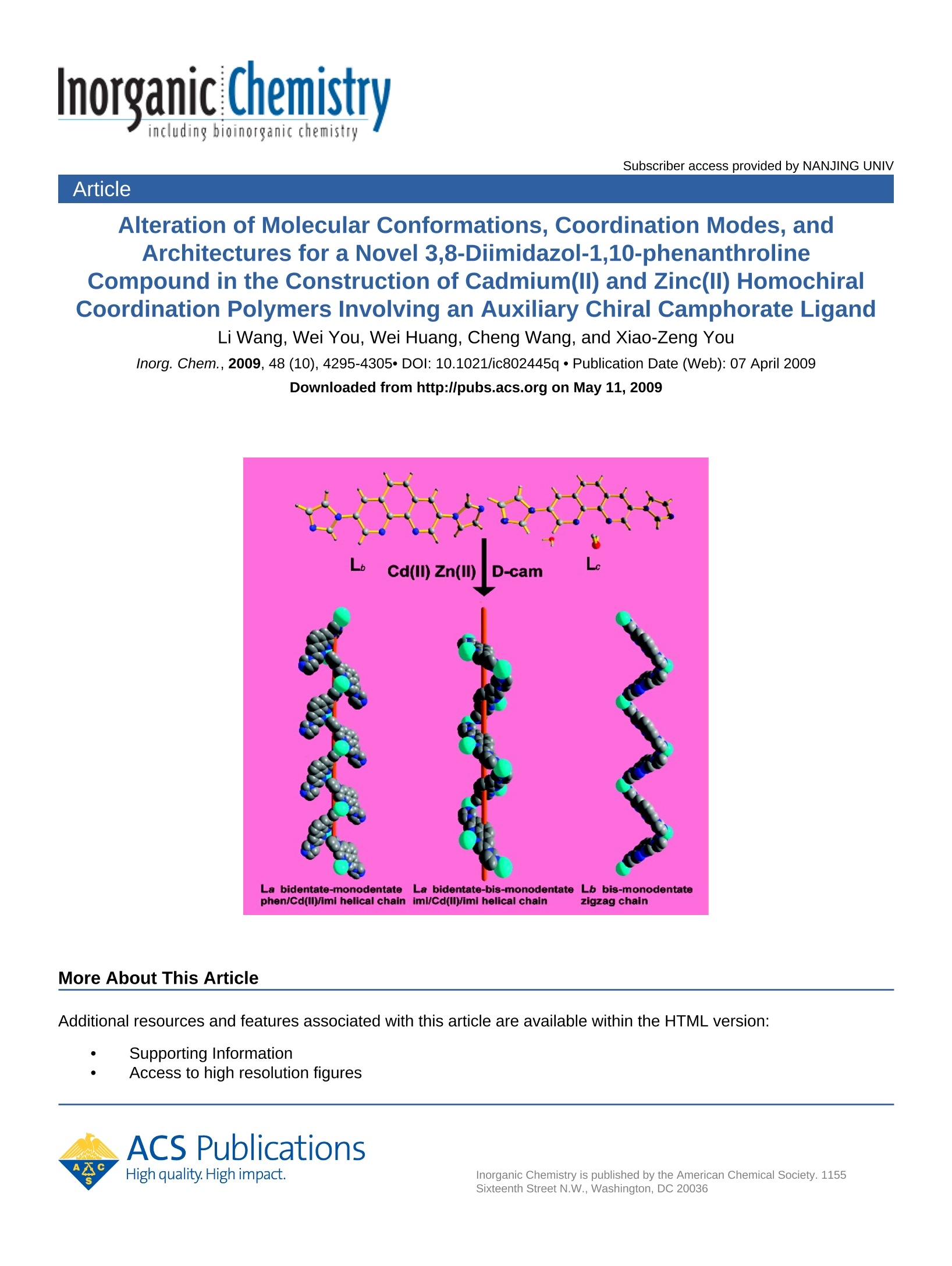
-
2/13

还剩11页未读,是否继续阅读?
继续免费阅读全文产品配置单
南京滨正红仪器有限公司为您提供《废水中综合检测方案 》,该方案主要用于废水中其他检测,参考标准《暂无》,《废水中综合检测方案 》用到的仪器有湿法蚀刻用PFA直筒烧杯CMP抛光用带刻度烧杯电子级pfa材料、PFA cassette4寸6寸花篮半导体硅片承载架配荣耀设备用晶圆盒8寸、PFA样品瓶新能源半导体实验用透明试剂瓶多种规格储液瓶、配套TFM消解罐41位、配套112FR-NEPTUNE Plus多接收等离子质谱仪用进样器、配套OneTouch微波消解罐40位仪器用消解管厂家定制TFM微波管、石墨消解炉土壤消解加热器石墨消解器、微波罐EXPRESS 55ml用微波消解罐盖子配件40位仪器配套消解管。
我要纠错
推荐专场
相关方案


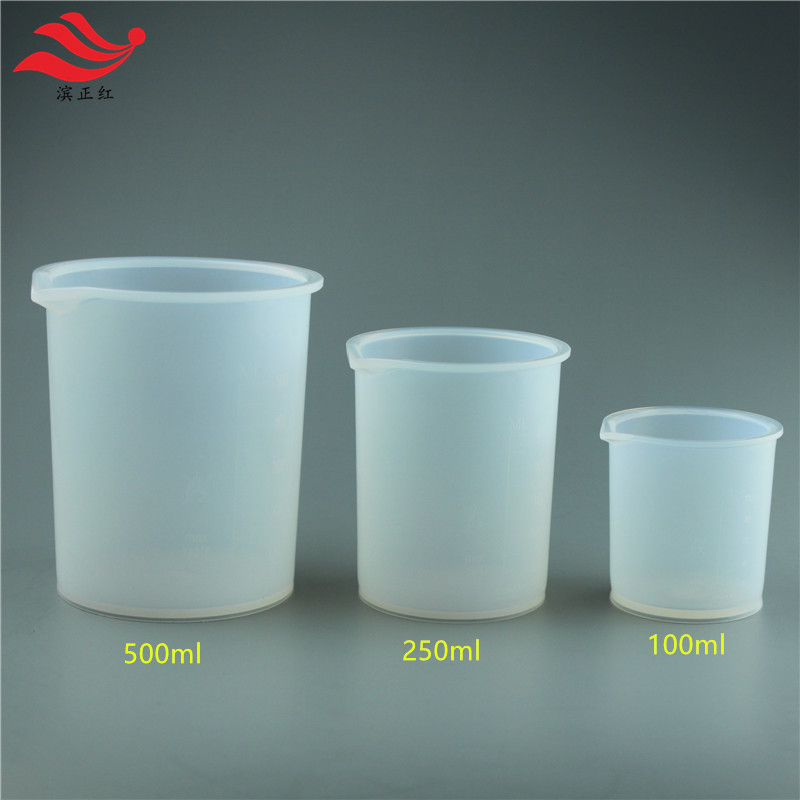

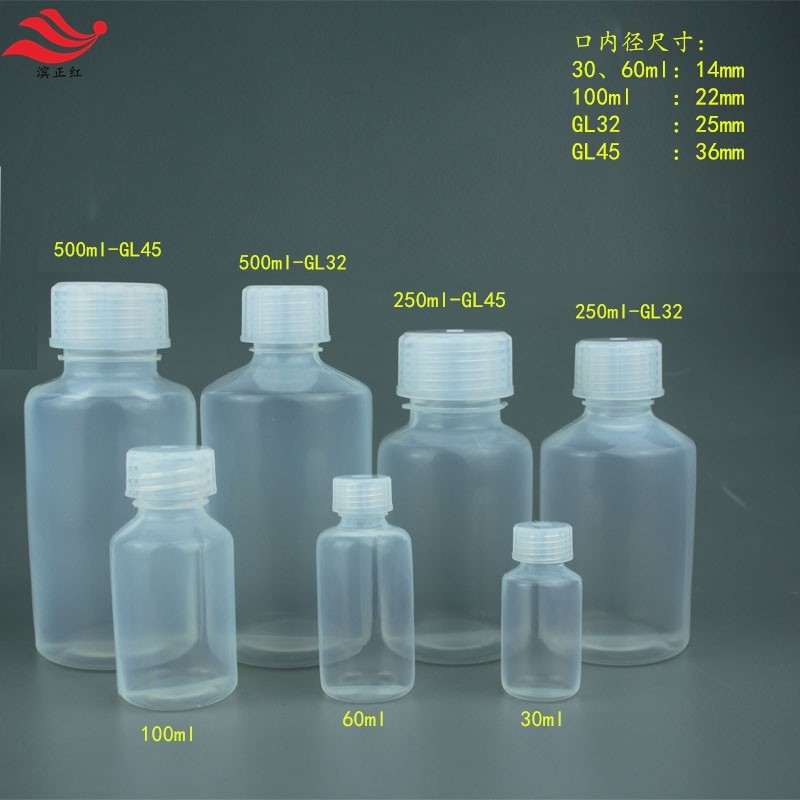
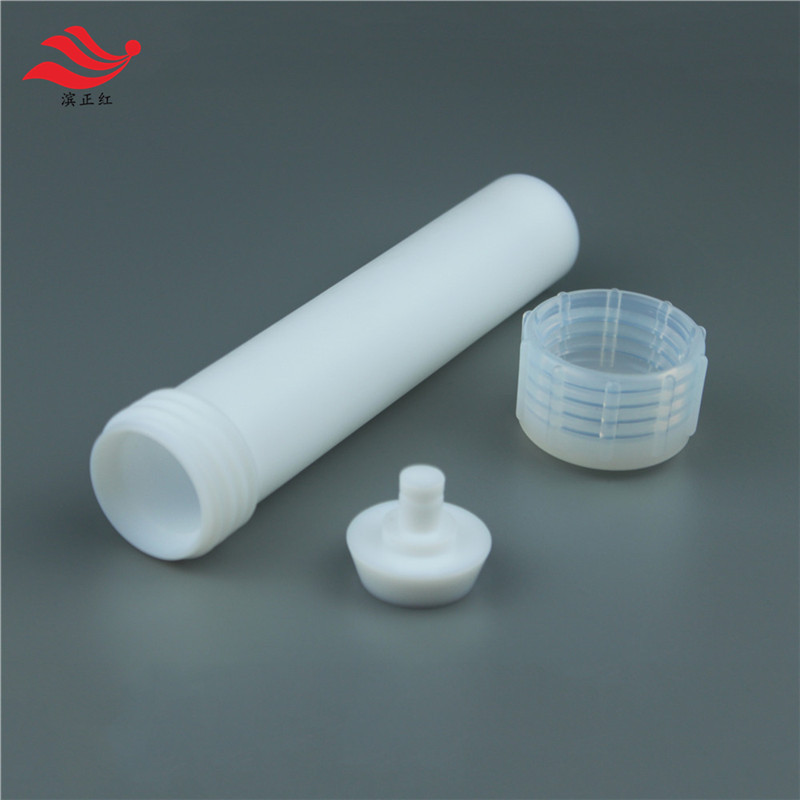
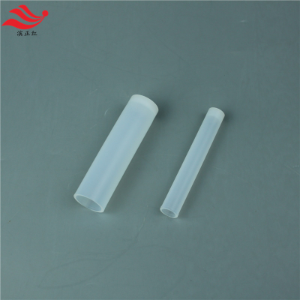
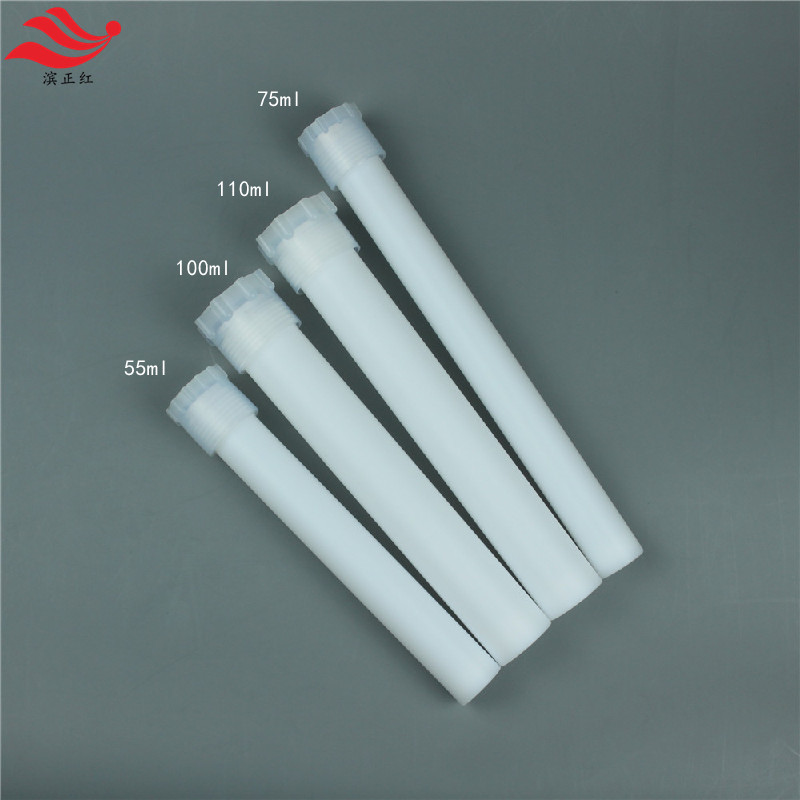
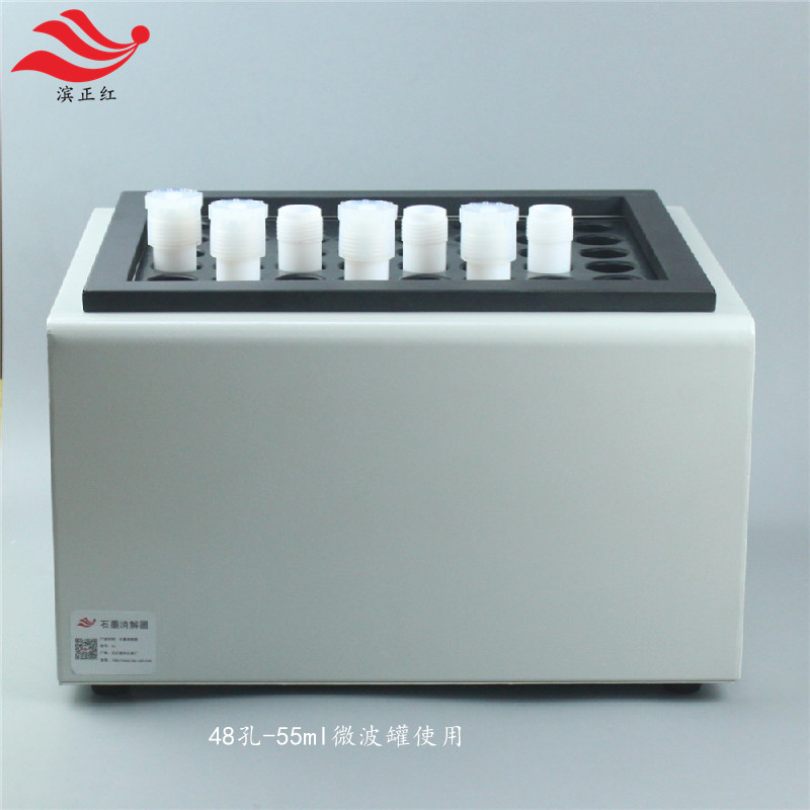
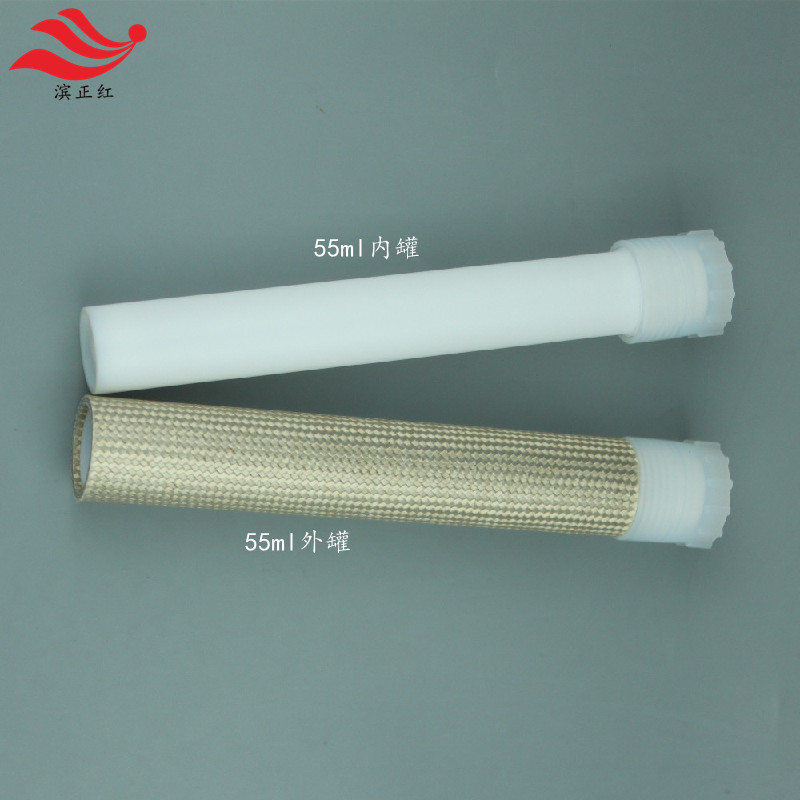
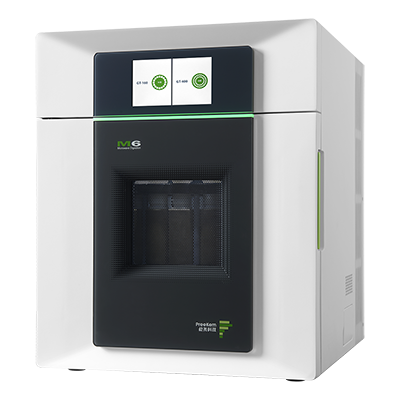
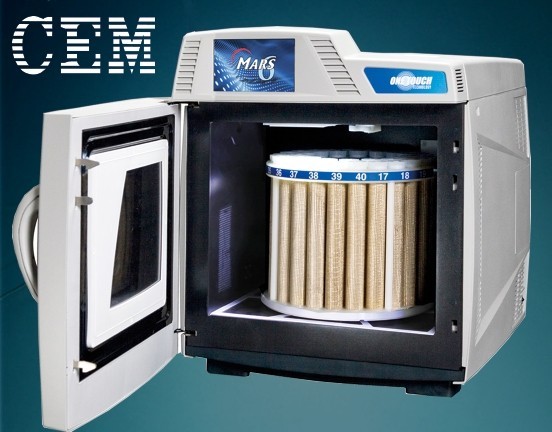
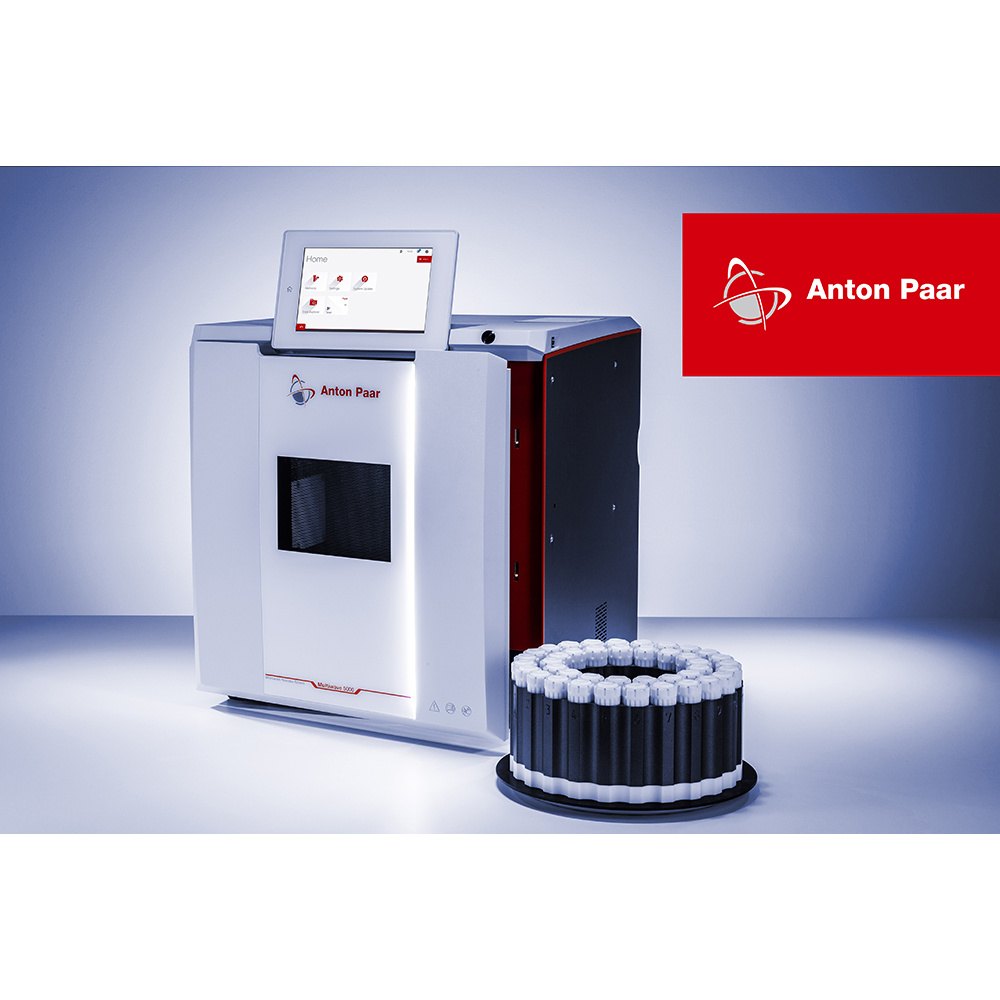
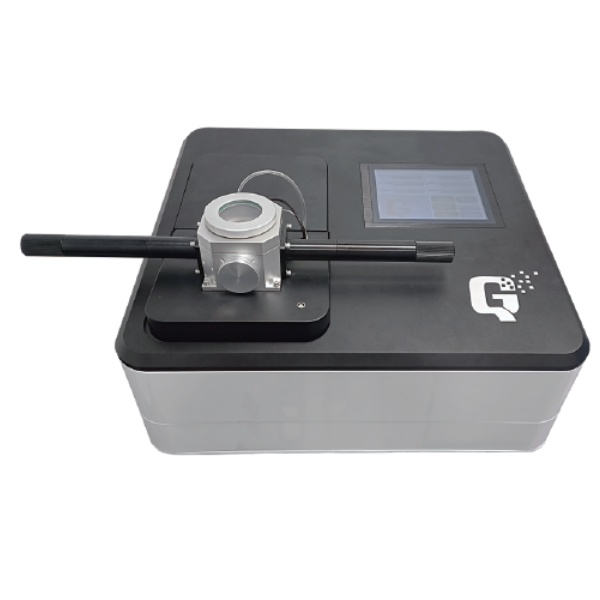
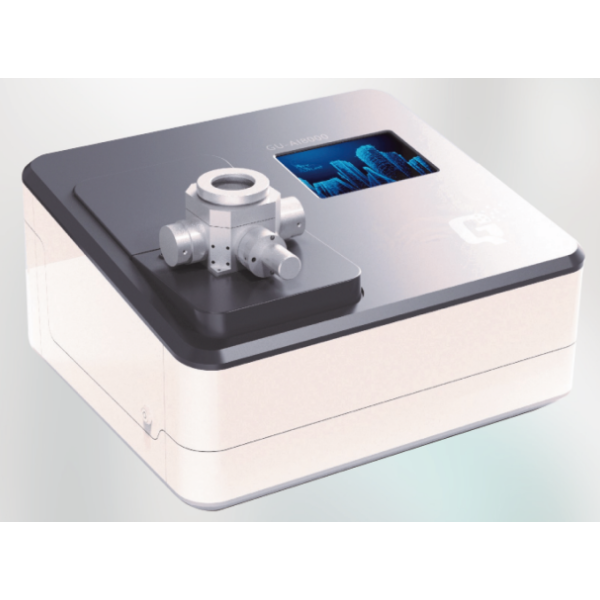
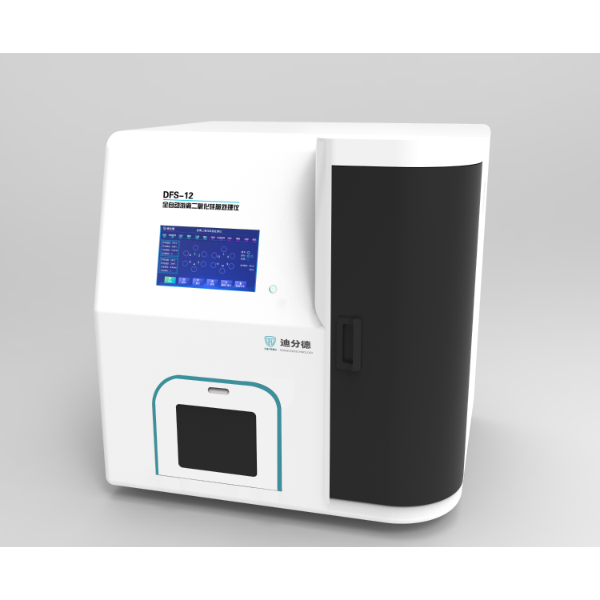
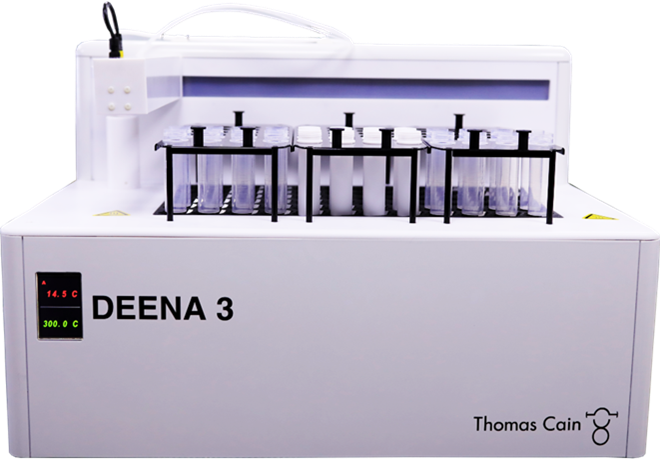

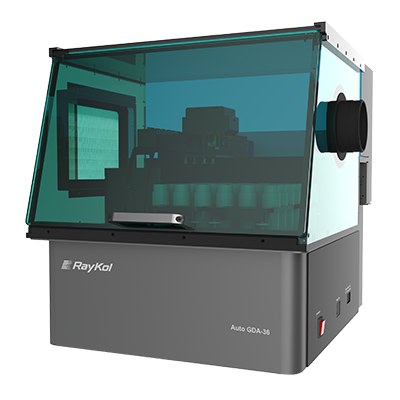
 咨询
咨询


